Themed collection New Talent: Americas

2016 New talent Americas across academia and the U.S. National Laboratories
Welcome to this themed issue of Dalton Transactions entitled ‘2016 New talent Americas across academia and the U.S. National Laboratories’ guest edited by Professor John Arnold, Dr James Boncella, Professor Pingyun Feng, Dr Tina M. Nenoff, and Professor Christine Thomas.

Dalton Trans., 2016,45, 9743-9743
https://doi.org/10.1039/C6DT90079H
Biomimetic catalysis of metal–organic frameworks
Recent advances in biomimetic catalysis of MOFs have been summarized and reviewed.
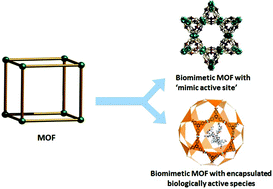
Dalton Trans., 2016,45, 9744-9753
https://doi.org/10.1039/C6DT00325G
Electrophilic activation of alkynes for enyne cycloisomerization reactions with in situ generated early/late heterobimetallic Pt–Ti catalysts
In situ assembly of a heterobimetallic Pt–Ti catalyst from a titanium-containing phosphinoamide ligand enables fast room temperature catalysis in enyne cycloisomerization reactions.
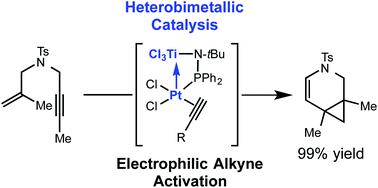
Dalton Trans., 2016,45, 9770-9773
https://doi.org/10.1039/C6DT01783E
Electrochemical and chemical routes to hydride loss from an iridium dihydride
Net hydride abstraction of a pincer-ligated iridium dihydride was accomplished by electrochemical oxidation (as H+/2e−) and chemical hydride transfer (as H−).

Dalton Trans., 2016,45, 9766-9769
https://doi.org/10.1039/C6DT00522E
Anionic and zwitterionic carboranyl N-heterocyclic carbene Au(I) complexes
The syntheses of the first carboranyl N-heterocyclic carbene complexes with transition metals are reported.
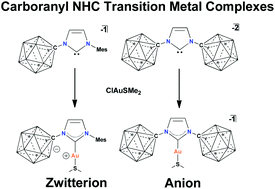
Dalton Trans., 2016,45, 9762-9765
https://doi.org/10.1039/C6DT00551A
Examining the role of Rh/Si cooperation in alkene hydrogenation by a pincer-type [P2Si]Rh complex
A bis(phosphine)/triflatosilyl pincer-type Rh(I) complex can reversibly store one equivalent of H2 across the Si–Rh bond upon triflate migration from silicon to rhodium.
![Graphical abstract: Examining the role of Rh/Si cooperation in alkene hydrogenation by a pincer-type [P2Si]Rh complex](/is/Image/Get?imageInfo.ImageType=GA&imageInfo.ImageIdentifier.ManuscriptID=C6DT00027D&imageInfo.ImageIdentifier.Year=2016)
Dalton Trans., 2016,45, 9758-9761
https://doi.org/10.1039/C6DT00027D
Permanently porous hydrogen-bonded frameworks of rod-like thiophenes, selenophenes, and tellurophenes capped with MIDA boronates
Permanently porous hydrogen-bonded organic frameworks comprising rod-like molecules with two MIDA boronate termini have been prepared.
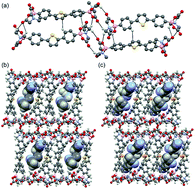
Dalton Trans., 2016,45, 9754-9757
https://doi.org/10.1039/C5DT04960A
Mechanistic examination of aerobic Pt oxidation: insertion of molecular oxygen into Pt–H bonds through a radical chain mechanism
DFT calculations were performed in an effort to evaluate the mechanism of O2 insertion into the Pt–H bond of TpMe2PtIVMe2H catalyzed by AIBN or light.
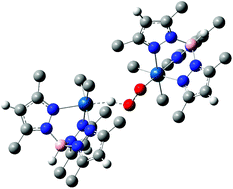
Dalton Trans., 2016,45, 11650-11656
https://doi.org/10.1039/C6DT00419A
Dynamic ruffling distortion of the heme substrate in non-canonical heme oxygenase enzymes
A double-well exists along the ruffling coordinate of cyanide-inhibited ferric heme, which explains the observation of “nested” VTVH MCD saturation magnetization curves.
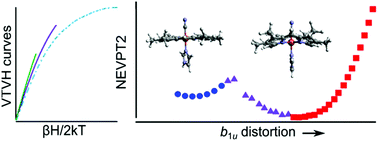
Dalton Trans., 2016,45, 10058-10067
https://doi.org/10.1039/C6DT00702C
Ligand K-edge XAS, DFT, and TDDFT analysis of pincer linker variations in Rh(I) PNP complexes: reactivity insights from electronic structure
Ligand K-edge XAS and DFT studies of ligand variations in Rh(I) pincer complexes and correlations to small molecule reactivity.
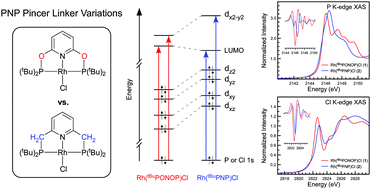
Dalton Trans., 2016,45, 9774-9785
https://doi.org/10.1039/C6DT00200E
Insertion of tBuNC into thorium–phosphorus and thorium–arsenic bonds: phosphaazaallene and arsaazaallene moieties in f element chemistry
The reactivity of thorium–phosphido and thorium–arsenido bonds was probed using tert-butyl isocyanide, tBuNC.

Dalton Trans., 2016,45, 10042-10049
https://doi.org/10.1039/C6DT00776G
Reversible control of the chromium valence in chemically reduced Cr-doped SrTiO3 bulk powders
The defect chemistry of Cr-doped SrTiO3 is modified through a simple chemical reduction route to increase the Cr3+ dopants in the lattice.
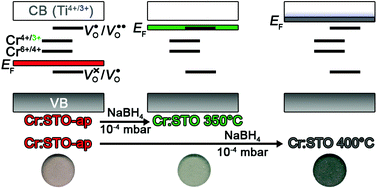
Dalton Trans., 2016,45, 10034-10041
https://doi.org/10.1039/C6DT00706F
Isolation of a bis(imino)pyridine molybdenum(I) iodide complex through controlled reduction and interconversion of its reaction products
This effort describes the isolation of a persistent Mo(I) monoiodide complex and its conversion to an unusual set of divalent (PDI)Mo complexes.
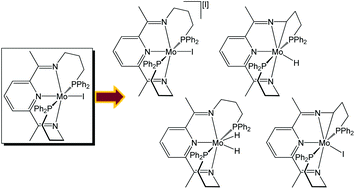
Dalton Trans., 2016,45, 10024-10033
https://doi.org/10.1039/C6DT00301J
Solvent influence on the thermodynamics for hydride transfer from bis(diphosphine) complexes of nickel
Hydride transfer from a molecular nickel hydride to CO2 changes from unfavourable in organic solvent to favourable in aqueous solution.
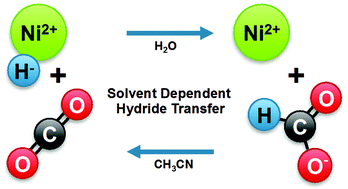
Dalton Trans., 2016,45, 10017-10023
https://doi.org/10.1039/C6DT00309E
Synthesis of a mononuclear, non-square-planar chromium(II) bis(alkoxide) complex and its reactivity toward organic carbonyls and CO2
A rare non-square-planar mononuclear Cr(II) bis(alkoxide) complex Cr(OR′)2(THF)2 is reported and its reactivity with organic carbonyls and CO2 is investigated.
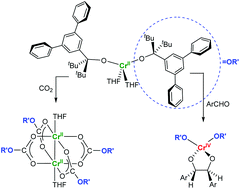
Dalton Trans., 2016,45, 9794-9804
https://doi.org/10.1039/C6DT00279J
Ca(II) and Ce(III) homogeneous alginate hydrogels from the parent alginic acid precursor: a structural study
Alginate hydrogels are suitable for the encapsulation of biomolecules and microorganisms for the building of bioactive materials.
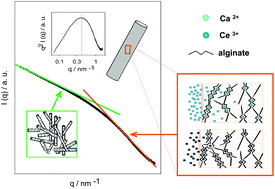
Dalton Trans., 2016,45, 10050-10057
https://doi.org/10.1039/C6DT00321D
Crystallization kinetics of the phase change material GeSb6Te measured with dynamic transmission electron microscopy
Crystallization kinetics of a promising phase change material are revealed with advanced photo-emission transmission electron microscopy with nanosecond-scale time resolution.
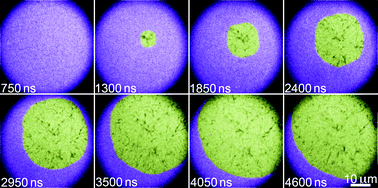
Dalton Trans., 2016,45, 9988-9995
https://doi.org/10.1039/C6DT00298F
Qualitative extension of the EC′ Zone Diagram to a molecular catalyst for a multi-electron, multi-substrate electrochemical reaction
Traverse the EC′ Zone Diagram with a molecular H2-evolving electrocatalyst through systematic variation of the acid pKa, scan rate, acid concentration and catalyst concentration.

Dalton Trans., 2016,45, 9970-9976
https://doi.org/10.1039/C6DT00302H
Voltage clustering in redox-active ligand complexes: mitigating electronic communication through choice of metal ion
Homoleptic bis(imino)acenaphthene complexes of aluminum, chromium, and gallium were synthesized, characterized and modeled to compare the orbital contributions of main group elements and transition metals in ligand-based redox events toward increasing energy density of battery electrolytes.
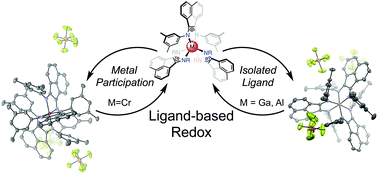
Dalton Trans., 2016,45, 9962-9969
https://doi.org/10.1039/C6DT00422A
C–H activation of ethers by pyridine tethered PCsp3P-type iridium complexes
An iridium complex supported by a PCPyP ligand featuring an internal pyridine tether showed selective mono-C–H activation of ethers, which represent intermediates in the synthesis of the corresponding Fischer carbenes.
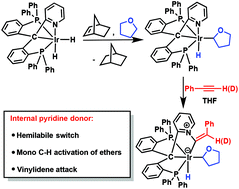
Dalton Trans., 2016,45, 10007-10016
https://doi.org/10.1039/C6DT00303F
Evidence for 5d-σ and 5d-π covalency in lanthanide sesquioxides from oxygen K-edge X-ray absorption spectroscopy
The electronic structure in the complete series of stable lanthanide sesquioxides, Ln2O3 (Ln = La to Lu, except radioactive Pm), has been evaluated using oxygen K-edge X-ray absorption spectroscopy with a scanning transmission X-ray microscope (STXM).
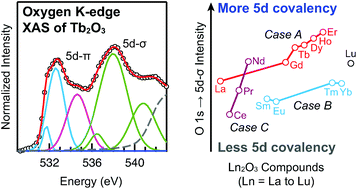
Dalton Trans., 2016,45, 9948-9961
https://doi.org/10.1039/C6DT00358C
Redox flexibility of iron complexes supported by sulfur-based tris(o-methylenethiophenolato)amine relative to its tripodal oxygen-based congener
Tripodal ligands designed to generate a local C3 symmetry have resulted in novel types of metal complexes that feature unusual bonding and electronic properties.
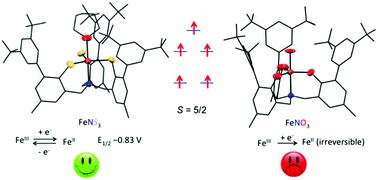
Dalton Trans., 2016,45, 9996-10006
https://doi.org/10.1039/C6DT00814C
Intramolecular sensitization of americium luminescence in solution: shining light on short-lived forbidden 5f transitions
Multidentate chromophore-bearing ligands are used to sensitize luminescence emission from trivalent americium, providing insight on the resulting complex coordination properties.
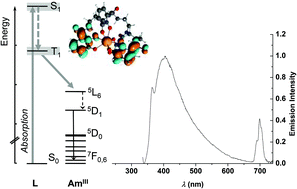
Dalton Trans., 2016,45, 9912-9919
https://doi.org/10.1039/C6DT00328A
Non-directed, carbonate-mediated C–H activation and aerobic C–H oxygenation with Cp*Ir catalysts
Carbonate additives enhance the activity of [Cp*Ir(H2O)3](OTf)2 for non-directed C–H activations and the aerobic C–H oxygenation of alkyl arenes.

Dalton Trans., 2016,45, 9942-9947
https://doi.org/10.1039/C6DT00234J
Synergizing nanocomposites of CdSe/TiO2 nanotubes for improved photoelectrochemical activity via thermal treatment
Effect of the thermal treatment temperature on the photoelectrochemical (PEC) activity of CdSe/TiO2 nanocomposites.
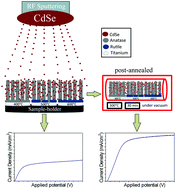
Dalton Trans., 2016,45, 9925-9931
https://doi.org/10.1039/C6DT00235H
Understanding the Zr and Si interdispersion in Zr1−xSixO2 mesoporous thin films by using FTIR and XANES spectroscopy
Zr1−xSixO2 mesoporous oxide thin films were obtained and their interdispersion was demonstrated by careful characterization using spectroscopic techniques.
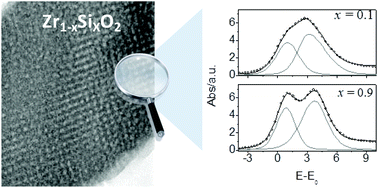
Dalton Trans., 2016,45, 9977-9987
https://doi.org/10.1039/C6DT00203J
Hydrothermal synthesis and characterization under dynamic conditions of cobalt oxide nanoparticles supported over magnesium oxide nano-plates
Surface evolution of a nano-catalyst comprised of oxidized Co NPs and MgO nano-plates was studied under O2, H2 and H2 + CO atmospheres using synchrotron-based X-ray spectroscopies.

Dalton Trans., 2016,45, 9932-9941
https://doi.org/10.1039/C6DT00204H
Probing the reactivity of pentaphenylborole with N–H, O–H, P–H, and S–H bonds
The reactions of molecules containing E–H functionalities (E = Group 15 or 16 element) and pentaphenylborole were investigated revealing diverse outcomes.
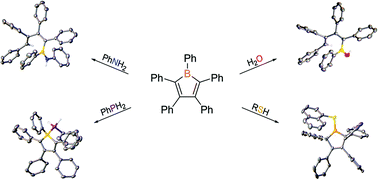
Dalton Trans., 2016,45, 9902-9911
https://doi.org/10.1039/C6DT00052E
Structure and bonding of group 4-nickel heterobimetallics supported by 2-(diphenylphosphino)pyrrolide ligands
The synthesis of a full series of group 4/nickel complexes supported by a 2-(diphenylphosphino)pyrrolide (NP) ligand is reported.

Dalton Trans., 2016,45, 9892-9901
https://doi.org/10.1039/C6DT00431H
Physicochemical aspects of epoxide driven nano-ZrO2 hydrogel formation: milder kinetics for better properties
Robust and highly transparent quasi amorphous ZrO2-water-glycerol hydrogels were obtained in a mild one pot procedure, based on the 2,3-epoxy-1-propanol driven alkalinization.
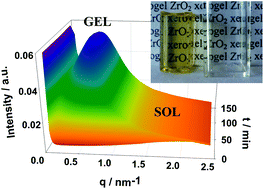
Dalton Trans., 2016,45, 9920-9924
https://doi.org/10.1039/C6DT00323K
Synthesis, structure, ultrafast kinetics, and light-induced dynamics of CuHETPHEN chromophores
Five heteroleptic Cu(I)bis(phenanthroline) chromophores with distinct variation in the steric bulk at the 2,9-phenanthroline position were synthesized using the HETPHEN method, and their ground and excited state properties are described.
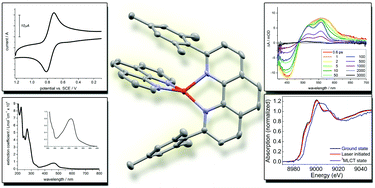
Dalton Trans., 2016,45, 9871-9883
https://doi.org/10.1039/C6DT00324A
Photophysics of GFP-related chromophores imposed by a scaffold design
In this paper, a rigid scaffold imposes the photophysics of chromophores with a benzylidene imidazolidinone core by mimicking the β-barrel structure of the green fluorescent protein (GFP) and its analogs.
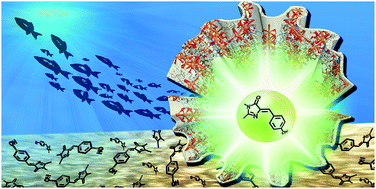
Dalton Trans., 2016,45, 9884-9891
https://doi.org/10.1039/C5DT05063D
Electronic and steric Tolman parameters for proazaphosphatranes, the superbase core of the tri(pyridylmethyl)azaphosphatrane (TPAP) ligand
The Tolman electronic parameters (TEP) and cone angles were experimentally measured for a series of substituted proazaphosphatranes ligands by synthesizing their respective Ni(LR)(CO)3 complexes, where L = P(RNCH2CH2)3N and R = Me, iPr, iBu and Bz.
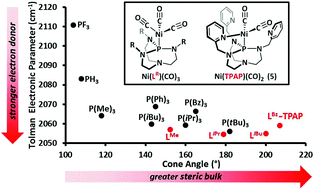
Dalton Trans., 2016,45, 9853-9859
https://doi.org/10.1039/C6DT00326E
Synthesis and characterization of potassium aryl- and alkyl-substituted silylchalcogenolate ligands
A series of monomeric silylchalcogenolate ligand salts, stabilized by the [K(18-crown-6)]+, cation have been prepared and isolated in good yields, along with full structural and spectroscopic characterization.

Dalton Trans., 2016,45, 9841-9852
https://doi.org/10.1039/C5DT04433B
Allylic amination reactivity of Ni, Pd, and Pt heterobimetallic and monometallic complexes
Transition metal heterobimetallic complexes with dative metal–metal interactions have the potential for novel fast reactivity.
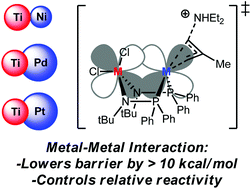
Dalton Trans., 2016,45, 9835-9840
https://doi.org/10.1039/C6DT00256K
Structurally versatile phosphine and amine donors constructed from N-heterocyclic olefin units
Hindered N- or P-donors have been grafted onto an N-heterocyclic olefin scaffold and versatile coordination behavior involving this new ligand set is described.
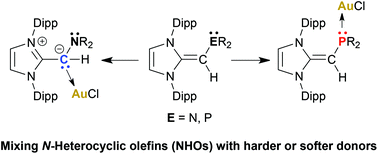
Dalton Trans., 2016,45, 9860-9870
https://doi.org/10.1039/C6DT00299D
Optimizing conditions for utilization of an H2 oxidation catalyst with outer coordination sphere functionalities
[Ni(PCy2NArginine2)2]2+ (CyArg) or [Ni(PCy2NBenzyl2)2]2+ (CyBn) were evaluated for H2 oxidation as a function of temperature, pressure, and solvent. 70 °C and 100 atm H2 result in a TOF of 1.1 × 106 s−1 and an overpotential of 240 mV for CyArg in water. In methanol the rates were 280 s−1 for CyArg and 80 s−1 for CyBn, demonstrating the importance of water and the outer coordination sphere (OCS).
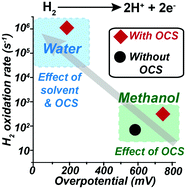
Dalton Trans., 2016,45, 9786-9793
https://doi.org/10.1039/C6DT00280C
Thermal degradation mechanism of triangular Ag@SiO2 nanoparticles
The thermal degradation mechanism of triangular Ag@SiO2 nanoparticles is elucidated through extended X-ray absorption fine structure measurements.
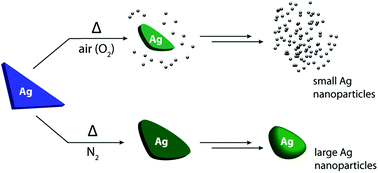
Dalton Trans., 2016,45, 9827-9834
https://doi.org/10.1039/C6DT00169F
Reduction of a diamidocarbene-supported borenium cation: isolation of a neutral boryl-substituted radical and a carbene-stabilized aminoborylene
We have synthesized the first diamidocarbene (DAC)-supported borenium salt which was found to readily undergo two sequential 1-electron reductions to give a boryl-substituted DAC-centred radical and a DAC-supported aminoborylene.
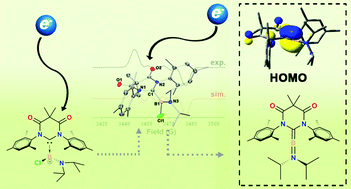
Dalton Trans., 2016,45, 9820-9826
https://doi.org/10.1039/C6DT00300A
First-principles molecular dynamics simulation of the Ca2UO2(CO3)3 complex in water
First principles molecular dynamics simulation reveals the structure and solvation of the Ca2UO2(CO3)3 complex in water and the hydrogen bonding network that differentiates the two Ca ions.

Dalton Trans., 2016,45, 9812-9819
https://doi.org/10.1039/C5DT04576B
Monoanionic bis(carbene) pincer complexes featuring cobalt(I–III) oxidation states
The synthesis and characterization of a series of cobalt complexes featuring a pincer bis(carbene) ligand of the meta-phenylene-bridged bis-N-heterocyclic carbene (ArCCC, Ar = 2,6-diispropylphenyl or mesityl) are reported.

Dalton Trans., 2016,45, 9805-9811
https://doi.org/10.1039/C5DT04723D
Ethylene glycol-assisted coating of titania on nanoparticles
Ethylene glycol can complex with titanium alkoxide to yield a chelated and stabilized titanium glycolate species that can be used as an excellent precursor for coating nanoscale colloidal objects. The titanium glycolate coating can be converted to crystalline TiO2 either through high temperature calcination or refluxing in water.
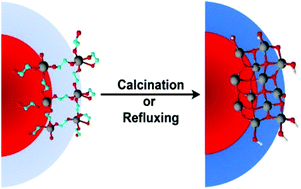
Dalton Trans., 2016,45, 10076-10084
https://doi.org/10.1039/C5DT04361A
A doubly deprotonated diimine dioximate metalloligand as a synthon for multimetallic complex assembly
An electrocatalytically active cobalt diimine dioximate metalloligand was prepared and explored as a precursor for a variety of multimetallic complexes with Co–Zn, –Cd, –Mn, and –Ru coordination.
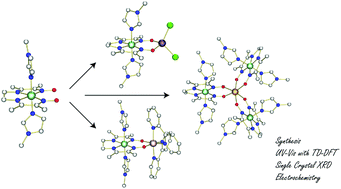
Dalton Trans., 2016,45, 10068-10075
https://doi.org/10.1039/C5DT03650J
About this collection
Guest Edited by Professor John Arnold (University of California Berkeley), Dr James Boncella (Los Alamos National Laboratory), Professor Pingyun Feng (University of California, Riverside), Dr Tina Nenoff (Sandia National Laboratories) and Professor Christine Thomas (Brandeis University), this themed issue will focus on all aspects of the chemistry of inorganic and organometallic compounds, including biological inorganic chemistry, solid-state inorganic chemistry and the application of physicochemical and computational techniques to the study of their structures and properties.
The themed issue showcases the excellent work being carried out in the Americas by emerging members of the scientific community.